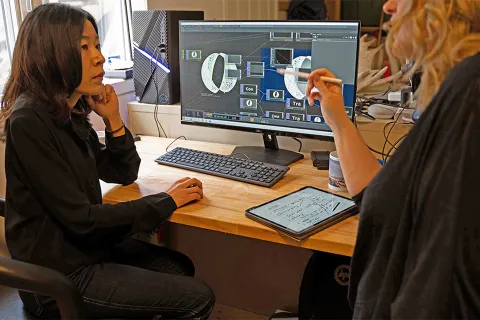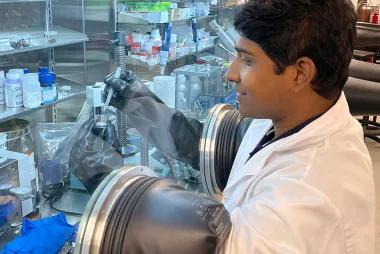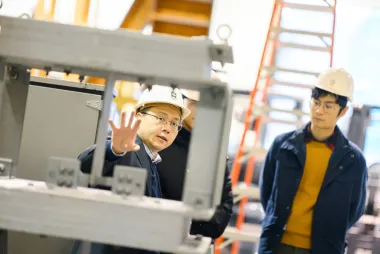UBC Okanagan’s new Master of Design builds leadership potential

The newly formed Master of Design degree at UBC Okanagan is a first for professional master’s degrees in Canada and it’s now accepting applications.
UBCO’s Faculty of Creative and Critical Studies, School of Engineering, and Irving K. Barber Faculty of Arts and Social Sciences created the interdisciplinary program to help answer vital questions affecting the planet.
“We are excited that we can work on designing solutions to wicked problems in British Columbia and beyond,” said Megan Smith, Program Director. “The program blends critical engineering, art and design disciplines to get hands-on and dig deep into resolving issues while training in entrepreneurship.”
The Master of Design degree is a full-time, 12-month professional graduate-level program intended to help students build design solutions for global challenges. The program blends critical design thinking, creative practice and engineering principles within a culture of innovation, creativity and social and sustainable entrepreneurship.
Courses focus on community-based creative approaches to project design as well as the conceptualization and preparation for prototyping and presentation of projects. The program is experiential by design, and students will learn through workshops, seminars, lectures, hands-on experiences, studio time and ongoing mentorship.
“There is a growing trend that challenges are becoming more complicated, and the solutions for these challenges need to be more creative and innovative,” explained Alon Eisenstein, Assistant Professor of Teaching, School of Engineering, who teaches in the program.
“It allows professionals from the arts, communications, engineering and tech communities to collaborate as a cohort in an interdisciplinary project-focused program that creates solutions for society, both local and global.”
Smith notes that the research tackles big questions and problems. “I design immersive experiences that allow the public to experience satellite data and infrastructure in new ways. I have worked on exposing human elements within large computational infrastructures and have designed virtual reality hardware for public safety training,” she says.
“I believe that by working across art, engineering and computer science, we can discover new solutions to major problems affecting the world. In particular, we need to rapidly develop solutions to mitigate the impact of climate change. We have to play a role in that effort.”
During the program, students will develop a project by onboarding an extensive resource of applicable skills, learning from experts and receiving first-hand experience and feedback on their work as they progress through production cycles.
The need for human-centred design and having the user at the centre of the process using design principles is becoming more in demand. Eisenstein adds that collaboratively solving problems in a team and finding solutions through working with other disciplines expands understanding and fuels growth.
“This concept of working together across disciplines is the real value and the core benefit of this program,” he said.
The first cohort is to begin study in May 2024. Interested applicants can email masterdesign.ok@ubc.ca to receive updates on the program.



